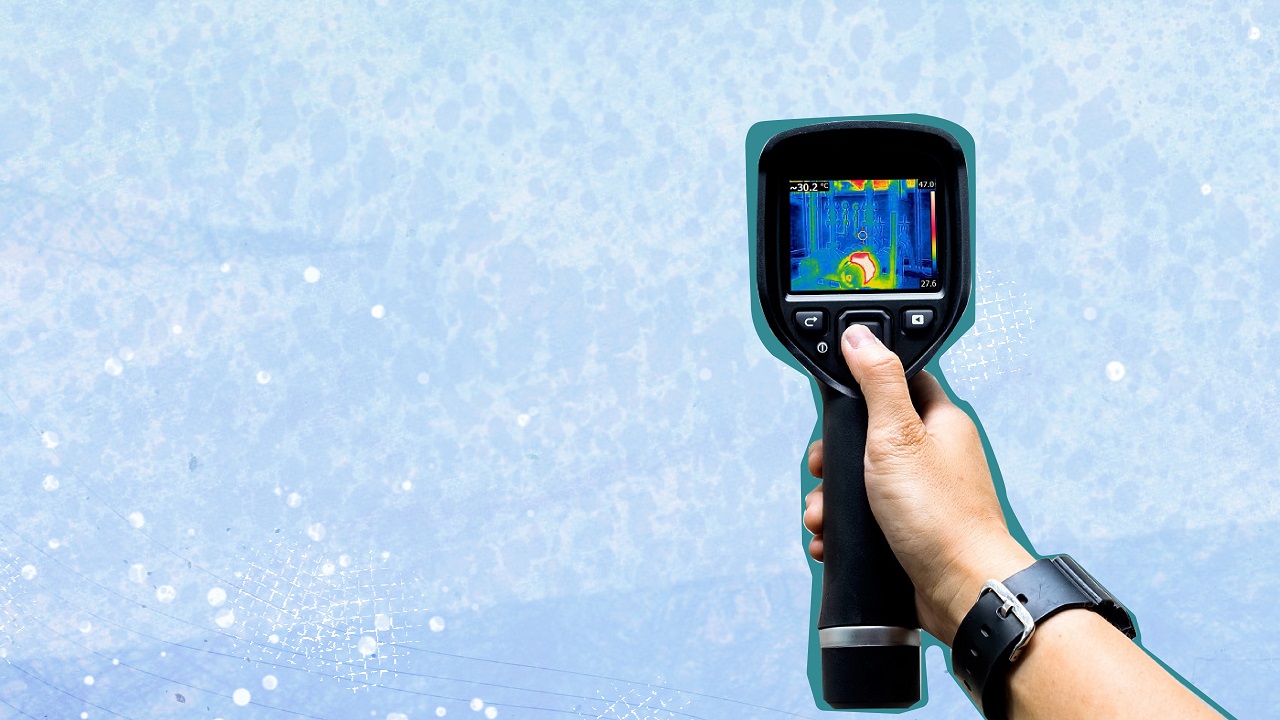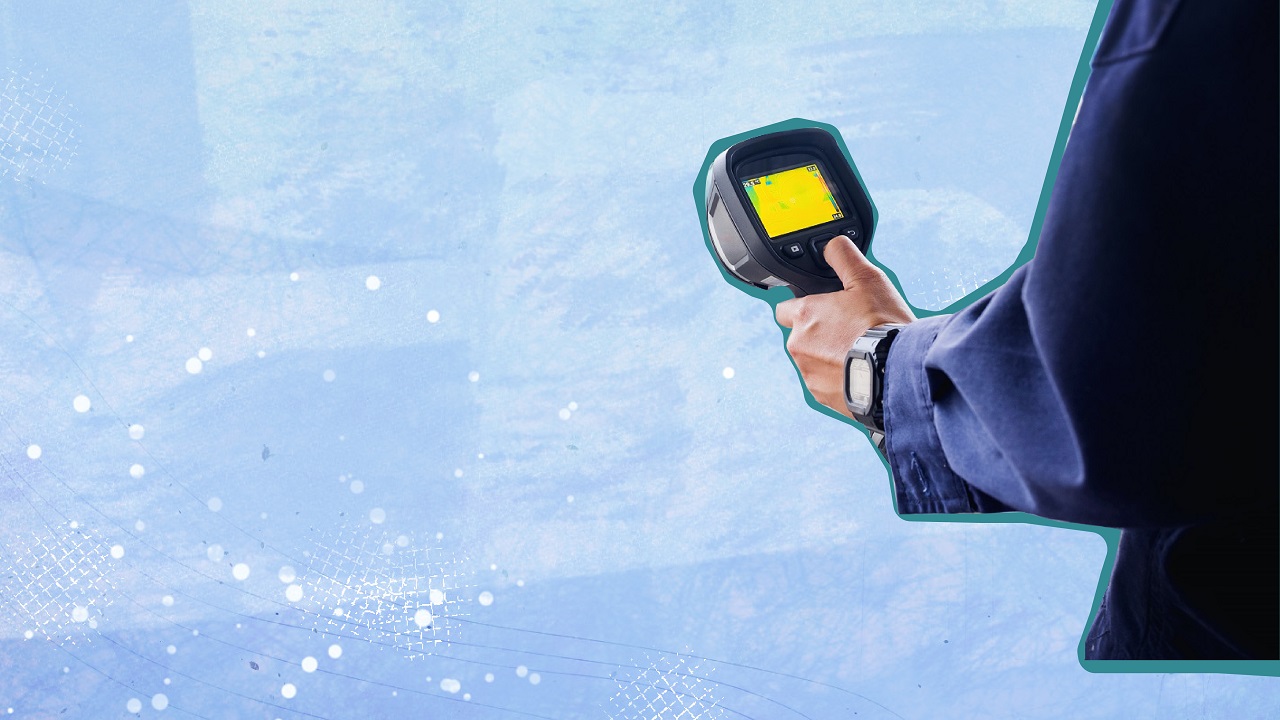Non-contact temperature measurement is the new way of checking for anomalies in air vents, water pipes, and walls. The best thermal leak detection kits, like thermal detectors and infrared thermometers, detect infrared radiation and differing wavelengths and display them as a temperature reading.
However, a thermal imaging tool may be a more reasonable option when compared to IR thermometers. Since both professionals and beginners can use it, thermal detectors are widely preferred because of their versatility and easy usage.
Advantages Of Thermal Leak Detector

1. Better Detection Process
While infrared thermometers display only a number, a thermal detector generates a heat image that can be more convenient for people who don’t know how to interpret these readings. Moreover, the image provided by the thermal detector also includes each pixel of the entire thermal image for a more comprehensive reading.
Studies show that a thermal detector provides an image resolution equivalent to using hundreds of thousands of IR thermometers simultaneously.
2. Time-saving
Thermal imaging cameras and leak detectors help scan a larger area or component simultaneously without missing any potential hazards.
3. Cost-effective
Thermal leak detectors can help save money in the long run. Although more expensive than IR thermometers, they are easier to use and require only one person to operate, saving you the costs of hiring extra staff.
4. Safer And Easier To Use
Since thermal cameras are quicker in providing results, they ensure less crowding and congestion when more clients or cases are involved. Thermal detectors are also easier to use. Plus, you can scan an area using a thermal detector from a long distance.
5. Field Of View
The camera lens of a thermal detector provides a broader field of view to detect more hot spots. This Field of View (FOV) depends upon a few criteria, such as the lens angle, IR resolution, thermal sensitivity, spectral range, and focus.
Different thermal detectors offer different kinds of focus, including fixed, manual, and automatic focus.
Disadvantages Of Thermal Leak Detector
1. Higher Investment
If a thermal leak detector uses a higher quality of thermal imaging, the initial investment you might have to make is higher than an IR thermometer. Often while checking for anomalies that are trickier to detect, you may require a few additions to equipment.
2. Difficulty With Inconsistent Temperatures
It can sometimes be difficult for a thermal detector to identify an irregularity when the surface temperature of some objects is not consistent. There can be an error in accurate imaging and temperature detection in cases of erratic emissivities and surface reflections. However, such cases are pretty rare.
3. Limited Usage
A thermal detector cannot be used to detect an object that is underwater or partially submerged. Also, thermal imaging may not be possible when an object is covered in glass since thermal energy reflects off shiny surfaces.
Advantages Of Infrared Thermometer
1. Single-spot Temperature Readings
An IR thermometer is convenient and reliable for single-spot temperature readings. After scanning the area, it gives you a single number as reading which professionals can use to fix even the tiniest anomalies without any hassle.
2. Versatility And Fast Reading
IR thermometers are the most effective medical tools since they enable measuring a person’s temperature without physically touching them. Their usage, however, doesn’t end in the medical field. They are also widely used in commercial establishments like restaurants, offices, and malls.
Moreover, an IR thermometer delivers accurate results within the shortest possible time. Compared to thermal detectors, which may take some time to convert signals to heat images, IR thermometers offer raw data you can interpret.
3. Affordable
You can find various IR thermometers with sufficient components at a low price. While thermal detectors provide better features, they can also be expensive.
An infrared thermometer is sufficient for small ready-to-go readings for both medical and construction purposes.
4. Portability
Since infrared thermometers are compact in size and design, they are easier to carry in small travel bags, duffels, suitcases, drawers, etc. These tools can be used with a simple button click and therefore do not require any additional equipment that you need to carry.
Disadvantages Of Infrared Thermometer
1. Covers Limited Surface Area
An infrared thermometer can often be classified as a thermal detector with only one pixel. Since it is more efficient in detecting a single spot temperature difference, it is unable to provide detection for a larger area at a given time. As such, it can often miss a temperature hazard due to its simple detection mechanism.
2. Not Suitable For Small Spot Size
These thermometers are limited in their ability to measure the temperature of small objects accurately. It has an enormous spot size compared to a thermal detector which focuses down to less than 5μm (micrometers) per pixel due to its close-up optic system.
3. Requires Additional Staff
Using these infrared sensors will require more staff to maintain your screening station, leading to additional costs.

Thermal Leak Detector Vs Infrared Thermometer Conclusion
As we compared thermal leak detectors and infrared thermometers, we found that both can be a good fit depending on what a situation demands. While IR thermometers are reliable tools for detecting and documenting temperature variations in research and development, thermal detectors can be more efficient.
Scanning a large area quickly or from a long distance is better suited for thermal detectors due to their more substantial scanning power.
For example, the best thermal leak detector from Black & Decker won the game with its high imaging performance, accurate readings, and easy usage. These characteristics make it the preferred tool for reporting and analyzing.
Finally, this comprehensive list of benefits and drawbacks will further help you decide which suits you best. If you liked this informative read, stay with us for more such articles.
We’ll be signing off now. Stay safe!


